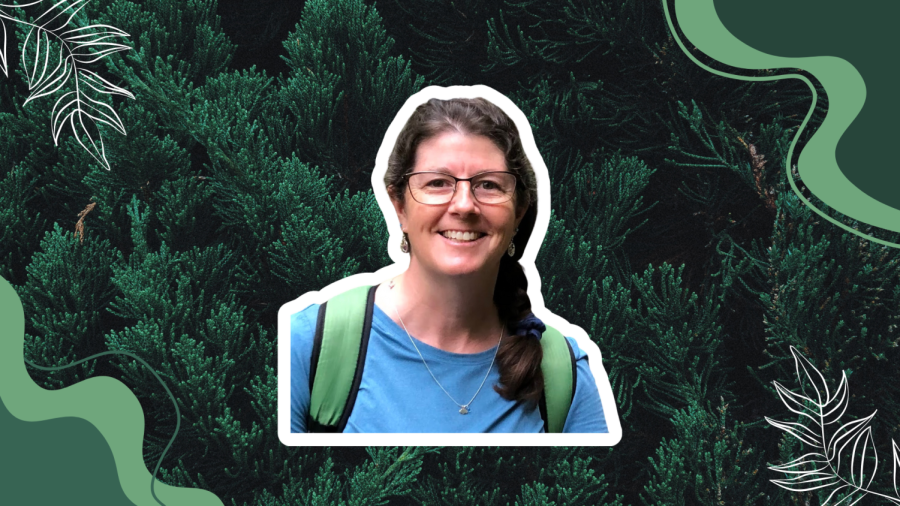Teacher Profile: Robyn Fewster’s journey to teaching environmentalism in APES
Robyn Fewster is the AP Environmental Science (APES) teacher at Amador. She shares her journey to teaching and spreading awareness on environmental issues. (Photo provided by Robyn Fewster, edited by Tejasvini Ramesh)
Robyn Fewster, the AP Environmental Science (APES) teacher at Amador, grew up in the California Bay Area. She lived in Pleasant Hill, a city about 30 minutes away from Pleasanton. Although teaching wasn’t always her dream career, science has been her passion for as long as she can remember.
“I love science. I love the outdoors. So anything that was biology related, I was interested in. We did a lot of camping when I was a kid, and I think that certainly influenced it. My mom did a lot of gardening. I think that influenced it too,” said APES Teacher Robyn Fewster.
As Fewster grew older and became a teenager, she focused her science interests on a specific field, enrolling in UC Berkeley as a marine biology major. After deferring the fall semester, she began her studies believing that she would become a marine biologist, but her path changed unexpectedly.
“At the end of the semester, when we were signing up for new classes, I went to the course catalog, and marine biology as a major completely disappeared. I had no idea that they were going to do that,” said Fewster. “I suddenly found myself without a major, and needed to decide quickly what I was going to do, so I ended up getting a degree from Berkeley in ecology.”
An unexpected path
Once Fewster received her degree, she needed to determine what career path she wanted to take. Becoming an ecologist seemed like the most logical route for her, but she quickly found that the career didn’t suit her needs.
“When I went to grad school in order to get more schooling, eventually becoming a restoration ecologist, I realized that if that was what I wanted to do, I would spend almost no time at home and I wanted to start a family,” said Fewster. “At the same time, as a graduate student, I was forced to TA classes, I had to teach lab classes, and I found I liked it.”
Then, after graduate school, Fewster became a teacher. One class she now teaches is AP Environmental Science. In this class, Fewster gets to teach a topic she deeply cares about, while informing students about the environmental issues the world is facing today.
“Environmentally speaking, I think that there’s so much that we need to be concerned about. I think there’s a whole lot of both misinformation and just no information. Students just don’t understand the bigger picture and how all things connect to each other, and how if we’re not taking care of the environment around us, that’s going to come and bite us,” said Fewster.
Trying something new
Despite having taught AP Environmental Science for six years, Fewster continues to find ways to incorporate new experiences and ideas into the classroom to enhance student learning.
“Eventually, I would like to do a whole lot more AG stuff than I do right now since my graduate school experience was basically botany and plant science, and I want to incorporate a lot more of that into this class, into APES. I just haven’t been able to do it yet. Now that I have the garden, I’m starting to, but I need time to build it,” said Fewster.
Teaching may have not always been Fewster’s dream job, but like a career in marine biology or ecology, it allows her to do what she loves.
“My favorite part of teaching is the fact that I like to share what I like. So things that interest me and get me excited, I want to share that with somebody else and hope that they get excited as well,” said Fewster.
Your donation will support the student journalists in the AVJournalism program. Your contribution will allow us to purchase equipment and cover our annual website hosting costs.

